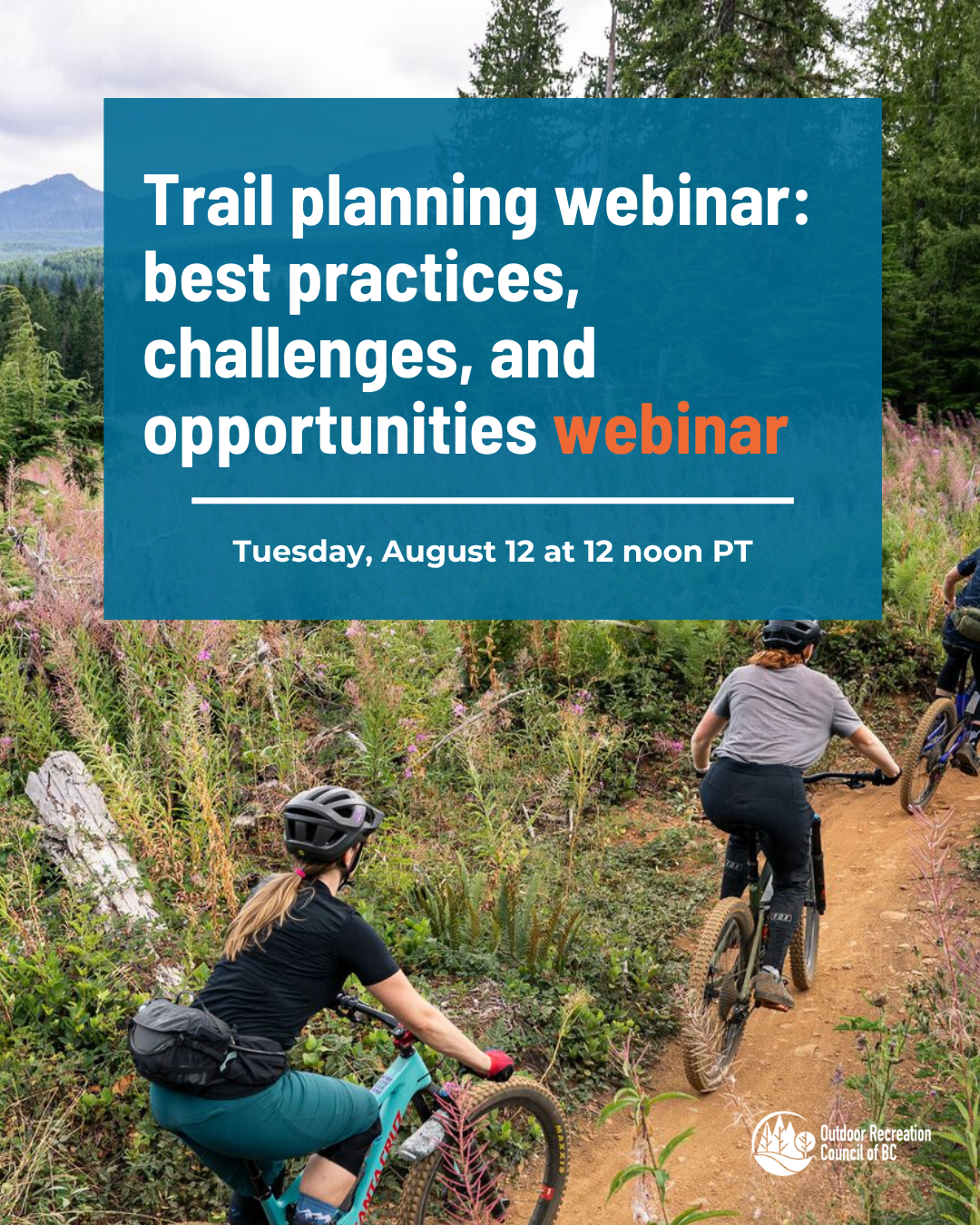Trail planning: Best practices, challenges and opportunities
Webinar Summary
Key findings: Trails may seem small, but they matter
All the best planning involves two things: collaboration and community involvement. Good trail planning needs to intertwine place and people. Only then can we create vibrant, connected communities.
Focus: Speaker Erik Morden shared the background, methodology and recommendations from his master’s thesis, More than a path: how community-based collaborative trail planning can shape the future of British Columbia mountain communities
Who: Eric Morden completed his thesis to earn a Master's of Community Planning from Vancouver Island University. With a background in academic research, grassroots outdoor initiatives, parks and trails management, and community planning, he brings a practical and interdisciplinary approach to recreation and land stewardship. erikmorden@gmail.com
Thesis question: How can trails support the development of vibrant, resilient and connected mountain communities?
Background: Erik focused on mountain communities because he noticed many of these communities are experiencing a revitalization largely driven by recreation, the demand on trails is rising, and the importance of trails to these communities is not completely realized. While he focused on land trails and mountain communities, he thinks many of the insights and lessons would apply to any communities and any type of outdoor recreation infrastructure. His research built on interviews with 14 people involved in community-focused trail planning in 2024.
Nine recommendations
1. Invest in Long-range Community-based Trail Plans: In the community, by the community, for the community
In: access out the front door; focus on proximity and connection to community, so trails become part of everyday life.
By: community has a leading role in the planning process; their ongoing involvement builds social capital for the trails.
For: build trails for the local community, not for tourists; it’s critical that the community cares and loves the trails first; tourism is a by-product.
2. Establish Collaborative Working Groups: you’re building more than trails.
Good trail planning brings different groups together to build consensus, capacity and shared meaning in the process of planning trails.
Examples: Cumberland Land Access Agreement, Shuswap Trails Roundtable.
3. Plan Trails for All: If trails are to be part of a diverse, equitable, and inclusive (DEI) community, they must be that themselves.
4. Build Relationships with Indigenous Communities Beyond Consultation Requirements: Trails provide a place to build connection, understanding and relationships with Indigenous communities.
See the ORCBC’s Guidance Toolkit for Engagement with Indigenous Communities.
5. Increase Long-term Funding for RSTBC and BC Parks: Current funding is insufficient to keep up with the demands.
6. Increase Local Government Support for Community Trail Groups: Rather than one time, grant based funds tied to the development of new infrastructure, funding should be ongoing and focused on maintenance.
Find good examples in our July webinar on Innovative Funding Models.
7. Explore User-pay Funding Models: There’s an untapped opportunity to explore taxes and user fees.
8. Include Recreation in Modernized Land Use Planning: But trail planning should be driven by the community and focused at the community level.
9. Create Post-Secondary Curricula for Trail Work: There is a need for a standardized trail planning education stream.
Stay Connected
Don’t miss the next webinar! Stay up to date by subscribing to our newsletter. It’s the best way to hear about upcoming webinars, events or outdoor recreation news. Or follow us on Facebook, Instagram or LinkedIn.
Questions, comments, or webinar topics you would like to see? Email us at info@orcbc.ca
Support Our Work
As a non-profit organization, we rely on supporters to keep our programs, resources, and advocacy going so that BC can have enjoyable and responsible outdoor recreation opportunities. A tax-deductible donation today makes a big impact for the outdoors tomorrow.

